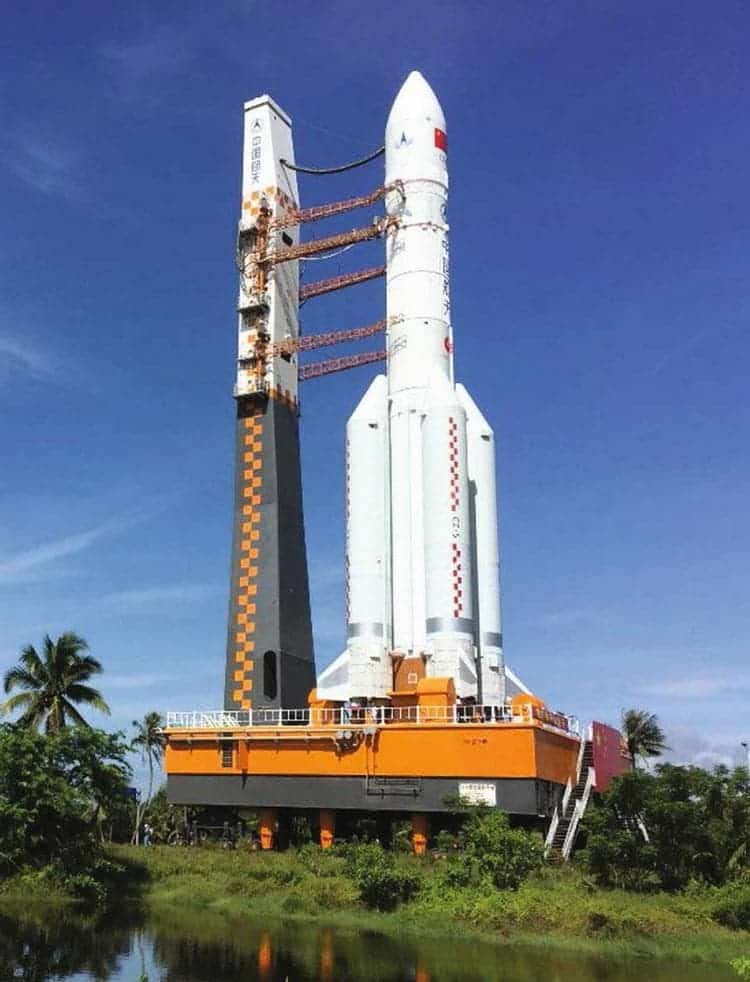Usually, an object from space (whether it’s a meteorite or a piece of space debris) enters the atmosphere, the friction causes it to burn up. However, if the object is large enough, some parts of it can still make it through to our planet’s surface. That will be the case with debris from a Chinese rocket which is expected to impact the planet early next week.

The falling body is the 25-ton (22.5 metric tons) core stage of China’s Long March 5B rocket, launched on Sunday, July 24 to orbit the second module of China’s Tiangong space station, which began in 1992 and is still under construction.
According to the Aerospace Corporation’s Center for Orbital Reentry and Debris Studies (CORDS), the rocket will remain in orbit for about a week. After that, it’s expected to reenter the planet’s atmosphere between the wide swath of 41 degrees north and 41 degrees south latitude based on its orbit. Contact is expected to occur around 3:30 a.m. EDT (0730 GMT) on July 31, give or take 24 hours.
The debris poses minimal risk to humans, but it could cause some damage if it lands in inhabited areas.
The core stages of most orbital-class rockets are made to land quickly after takeoff, safely over sparsely populated areas of terra firma, or to perform powered, vertical landings to allow for reuse, like the first stages of SpaceX’s Falcon 9 and Falcon Heavy. However, the Long March 5B core also enters orbit with the payload, resulting in an uncontrolled atmospheric drag-driven crash back to Earth.
“The general rule of thumb is that 20-40% of the mass of a large object will reach the ground, but the exact number depends on the design of the object,” The Aerospace Corporation wrote in an explainer about the impending rocket fall. “In this case, we would expect about five to nine metric tons (5.5 to 9.9 tons).
Such aimless dives were observed on China’s two prior Long March 5B missions, the first of which occurred on May 5, 2020. A week or so later, a Long March 5B body crashed into the ocean off the west coast of Africa, apparently dumping some debris on the Ivory Coast. Ten days after Tiangong’s Tianhe core module was launched in May 2021, the second Long March 5B reentered the atmosphere over the Indian Ocean.
Additionally, in April 2018, Tiangong 1, a test space lab that aided in developing the Tiangong space station, crashed back to Earth over the Pacific Ocean.
No reported injuries were caused by any of these incidents. However, exploration specialists have criticized China for allowing such space junk falls to happen because of the potential for injury and damage to infrastructure on the ground. Researchers are increasingly calling for spacefaring countries to show more responsibility.
“Spacefaring nations must minimize the risks to people and property on Earth of reentries of space objects and maximize transparency regarding those operations,” NASA Administrator Bill Nelson wrote in a statement shortly before Tianhe’s Long March 5B body came down last year. “It is clear that China is failing to meet responsible standards regarding their space debris. It is critical that China and all spacefaring nations and commercial entities act responsibly and transparently in space to ensure the safety, stability, security and long-term sustainability of outer space activities.”
Three modules will ultimately make up the Tiangong space station. This fall, China is anticipated to launch the third and last module on a Long March 5B.


